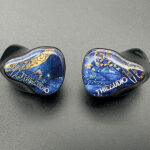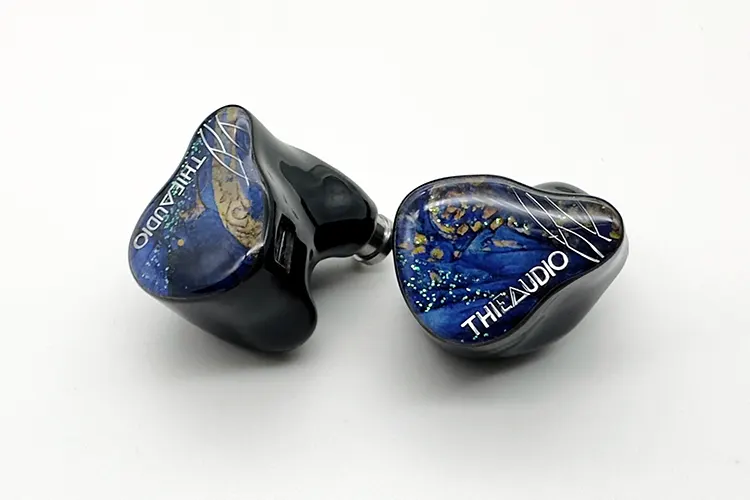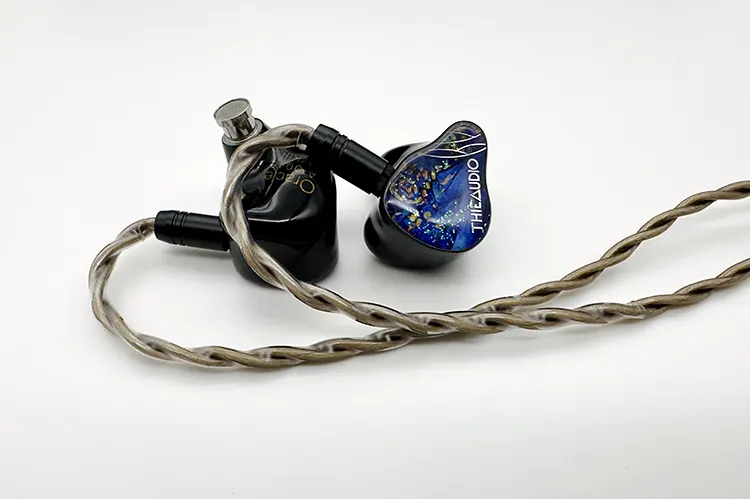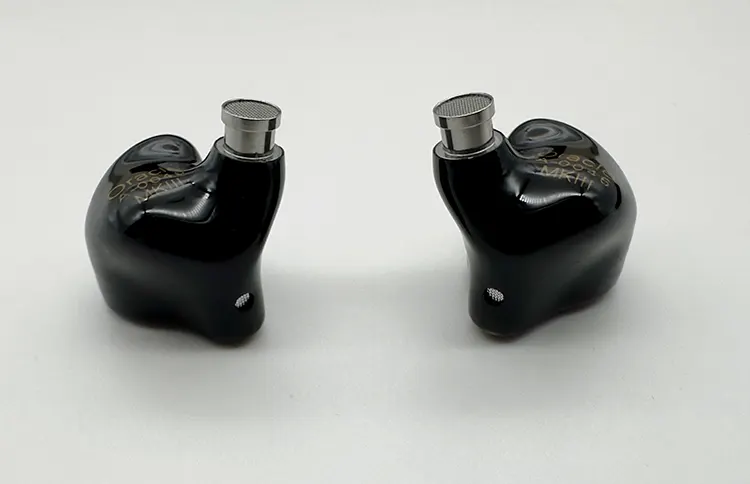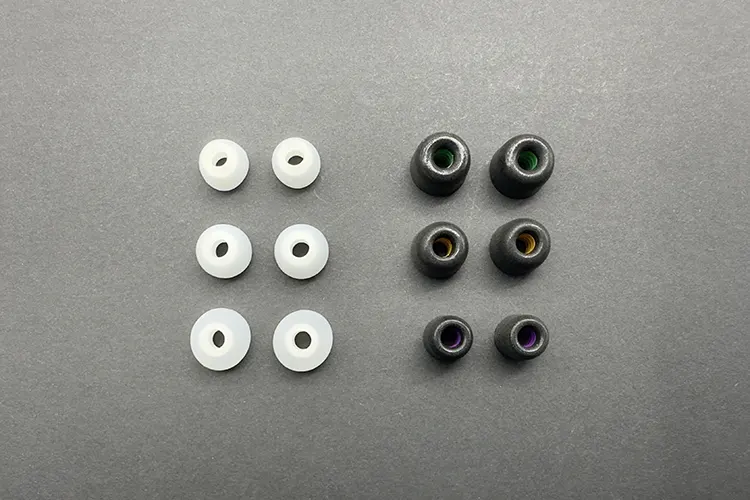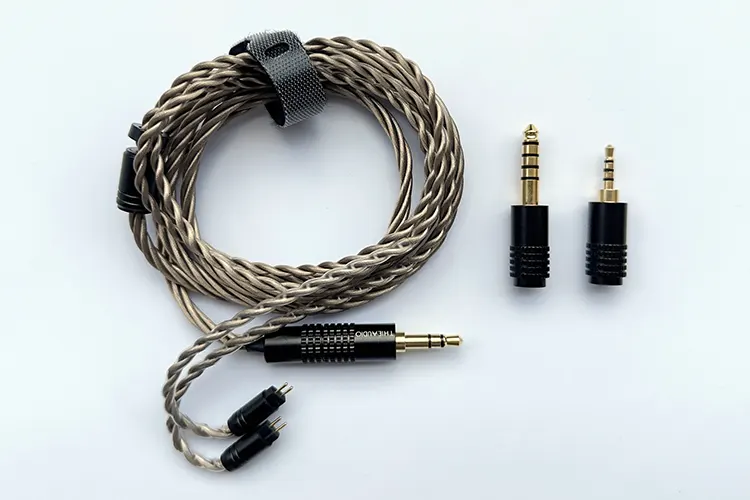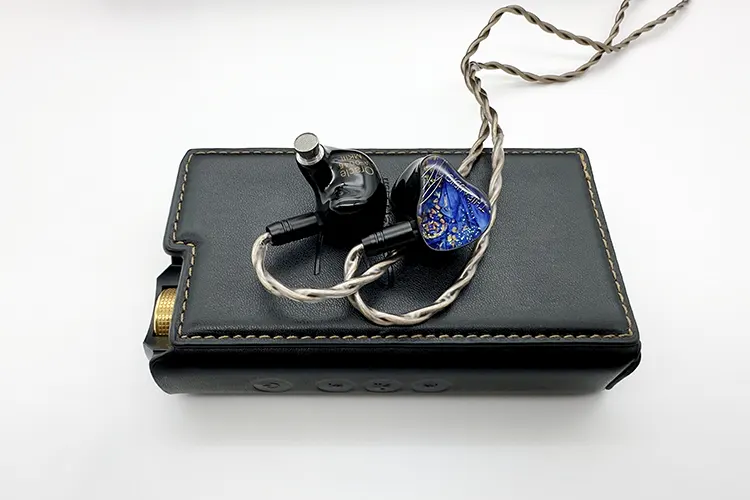In this feature, Nihal reviews the THIEAUDIO Oracle MKIII, which is the company’s next generation tri-brid dual dynamic, BA and EST driver IEM. It is priced at $589.
Disclaimer: This is a sample in exchange for my honest opinion. Headfonics is an independent website with no affiliate links or status. I thank Linsoul and THIEAUDIO for this opportunity.
Click here to read more about THIEAUDIO products previously reviewed on Headfonics.
Note that this article follows our latest scoring guidelines which you can read in more detail here.
I won’t dive into a full introduction of THIEAUDIO and its past achievements, as most of us are already familiar with the brand and the impressive lineup of IEMs they’ve brought to the market.
Their Oracle Series is well-regarded as affordable tri-brid driver studio IEMs, designed to deliver professional-grade sound at an accessible price.
Now, THIEAUDIO is back with the Oracle MKIII, a revision to the Oracle MKII with some notable enhancements. This latest version is priced at $589 which is the same as its predecessor, a strategy the brand frequently employs with their upgrades.
In this review, I will dive into the Oracle MKIII’s performance and how it stacks up against other IEMs such as the Hype 4, and the I/O Audio VOLARE.
Features
The earlier version, Oracle MKII, features a 10mm dynamic driver, 2 Knowles balanced armature drivers, and 2 Sonion EST ultra-treble tweeters.
These five drivers are integrated using a three-way crossover. In the new version, the IEMs are packed with an extra dynamic driver, making it a 2DD+2BA+2EST configuration, and there is an updated crossover system.
Dissecting further, we find the driver configuration of the Oracle MKIII is composed of two ultra-high frequency drivers, one high frequency driver, one mid-frequency driver, and two low-frequency drivers.
The MKIII version utilizes the IMPACT2 technology, which has been found on many recent THIEAUDIO IEMs, such as Hype 4, Hype 10, and the Monarch MKIII.
It is a subwoofer solution consisting of two 10mm dynamic drivers arranged in an isobaric design housed in a chamber, keeping the frequency and pressure constant to enhance sub-bass quantity and texture.
There is an updated 4-way crossover system. The IEM also implements independent sound bores for each driver type to deliver better layering, imaging, and instrument separation.
Design
Maintaining the consistency of their IEM shell designs, the Oracle MKIII features resin-made shells with a sleek, all-black look.
The faceplate stands out with its intricate yet minimalist design, showcasing a deep blue base accented by light brown patterns. Scattered tiny green sparkles add a subtle shine when they face the light.
The brand’s logo is neatly placed along the edge of the faceplate on both shells. I find this design to have a nice balance of subtleness and vibrancy.
The IEM connects via a recessed 2-pin 0.78mm socket, with a shorter and wider nozzle than the usual ones you might encounter.
Additionally, there’s a small vent near the nozzle, protected by a mesh filter—a design element consistent across many THIEAUDIO IEMs.
Comfort & Isolation
When it comes to ergonomics, the shells are impressively well-designed. They’re compact, lightweight, and feature smooth curves that conform comfortably to the ear.
The shape of the shells has a very ergonomic design, ensuring a snug and comfortable fit. There are no pressure points or sharp edges to cause discomfort during longer listening sessions.
While shell size might be subjective, the Oracle MKIII shells, for example, are slightly larger than those of the Hype 4 just by a small margin, giving you an idea of their relative size.
The fit is nearly flush, so the IEMs don’t stick out from your ears. Once put in, they stay secure and discreet, making them ideal for on-the-go use without the risk of falling out or loosening.
The isolation factor on the IEM is decent enough, which blocks a fair amount of outside noise. With good-fitting ear tips, it achieves an even better level of isolation.
Ear Tips
The THIEAUDIO Oracle MKIII comes with a set of foam and silicone tips. Honestly, the selection feels a bit limited considering the IEM’s price point.
It would have been nice to see a wider variety, including tips with different bore sizes—both wide and narrow—as offered by many other IEM brands.
These stock tips are the same ones that come with other THIEAUDIO models, like the Hype 4 and Hype 10. The silicone tips are available in small, medium, and large, as are the foam tips. The foamies have colorful stems for easy identification.
I found the stock silicone tips less than ideal due to the short and wide nozzle, which didn’t give me the best fit. I had to experiment a bit to find a decent fitting, and ultimately, the SpinFit Omni ear tips provided the best fit and performance.
Stock Cable
The Oracle MKIII is packed with a high-grade silver-plated OCC cable, similar in design and feel to the Hype 4, Hype 10, and Monarch MKIII IEM versions.
This is also a modular cable system, allowing you to choose between 4.4mm, 3.5mm, and 2.5mm plugs, depending on your device. The jacks connect using a switch lock system over a thin slot, making it easy to swap between plug types.
The cable sports a light brown color with a smooth outer sleeve, providing a soft and comfortable touch. It connects to the IEM shells via a 2-pin connector. The adapter, y-split, and 2-pin connectors are well-built, giving the cable a solid, robust feel.
The cable performs decently, so I never needed to swap it out for something else. Additionally, it is very lightweight, making it easy and comfortable to manage the cable when on the move.
Packaging & Accessories
Staying true to their usual style, the Oracle MKIII comes in a large box, similar to the Hype 4 and Hype 10 versions. The outer sleeve showcases a picture of IEMs with a background similar to the faceplates, along with details on the driver configuration and other key features.
On the back, there’s plenty of information about the company. Once you slide off the sleeve, you’re met with a sleek black box with the THIEAUDIO name engraved in silver.
Upon opening the box, the IEMs are neatly presented with the cable carefully rolled up and placed in a dedicated cutout on one side. The other side holds the carry case securely within a large cutout.
The foam inside the box is firm enough to keep the IEMs and accessories safe. Inside the carry case, you’ll find two packs of ear tips and a cleaning cloth. The accessories with the Oracle MKIII include:
- Carry Case
- Foam Tips + Silicone Ear Tips
- Silver-plated OCC Cable with multiple adapters
- Cleaning cloth
- Pair of IEMs
Carry Case
The carry case is well-sized, offering ample space to comfortably store the IEMs along with the cable.
It features a zippered closure and is lined with soft fabric on the outside, while the interior is cushioned to provide extra protection. Inside the upper flap, there’s a handy mesh pocket where you can store ear tips or other small accessories.
The case is designed to be protective, ensuring the IEMs are securely stored. However, due to its size, it might not fit easily into smaller pockets.
Sound Impressions
The following sound impressions of the THIEAUDIO Oracle MKIII were completed using a mixture of my main source, Lotoo’s Paw Gold Touch, and occasionally the Questyle CMA18P and Earmen Angel DAC/amps.
For the review, I paired the IEMs with stock cable and SpinFit Omni ear tips, size L.
Summary
The Oracle MKIII features a near-neutral sound signature with a touch of warmth. There is a bass boost, thanks to its dual dynamic driver setup, which gives the lows some emphasis.
The midrange remains mostly clean and neutral, while the upper frequencies offer good detail and extension. Overall, the sound profile is well-balanced, blending musicality with strong technical performance. The IEM handles almost any track like a boss.
Bass
The Oracle MKIII incorporates THIEAUDIO’s latest IMPACT2 technology, a notable upgrade from its predecessor’s single dynamic driver configuration catering to the lower frequencies. This enhancement brings a well-rounded bass performance with a decent sub-bass and good mid-bass presence.
The bass delivers a satisfying impact and punch, with a speed that’s just right—neither too fast nor too sluggish. It carries a rich, full character that adds body and warmth to the overall sound, making the music feel more immersive and fun at the same time.
The bass is tight and controlled, with a subtle reverberation that enhances its depth without compromising precision. While it doesn’t hit as hard as some might prefer and could benefit from a touch more tightness or a deeper sub-bass rumble for those craving a bass-heavy experience, there’s little to criticize.
The bass texture and layering are commendable, providing depth and dimension without overshadowing the upper frequencies. Overall, the Oracle MKIII’s bass strikes a well-balanced blend of richness and control, contributing positively to its engaging sound signature.
Midrange
The midrange of the Oracle MKIII adhering to its studio monitor-like tuning stays true to the track. The mids are near-flat and neutral, with a touch of warmth to keep things engaging.
The bass shelf adds a bit more presence to the lower midrange, giving a decent depth and body to the sound and imparting a lush quality too.
The clarity and transparency in the midrange are impressive, with a subtly forward presentation that doesn’t push vocals too close. They sit naturally within the mix, avoiding any exaggeration or undue emphasis. This careful balance ensures the Oracle MKIII retains its studio-like profile.
The vocals strike a perfect balance—neither too thin nor too thick—preserving their natural, full-bodied character. The near-linear midrange ensures a realistic presentation, with no particular element overshadowing the others.
The upper midrange is well extended, enhancing the detail in instruments and vocals. There’s no trace of sibilance or harsh peaks, making the overall midrange all the more rich, detailed, and enjoyable.
Treble
According to THIEAUDIO, they have addressed one of the main critiques of the Oracle MKII by refining the treble in the Oracle MKIII.
Keeping the same dual Sonion EST drivers for the higher frequencies, the treble is now smoother than the previous version. This treble is quite detailed and well-extended, delivering a sense of airiness and added sparkle.
Notes are well-defined with natural decay, creating a smooth treble experience free of harshness or sharp peaks, making it enjoyable and non-fatiguing. Treble enthusiasts will likely find this tuning particularly appealing.
However, it’s important to note that the treble’s performance can vary depending on the source and ear tips used. In some cases, the treble may become overly exaggerated, leading to sharpness and fatigue that can detract from the overall enjoyment.
Proper pairing is essential to maintain the intended balance and avoid any potential issues.
Staging & Dynamics
The Oracle MKIII boasts impressive technical capabilities, making it a strong contender among IEMs in its price range.
The soundstage offers decent width and depth, with a slight emphasis on width over depth and height. There is a nice holographic soundstage on offer, creating an immersive listening experience.
Instrument separation is particularly noteworthy, with tracks being perfectly layered and instruments and effects clearly distinguished.
Thanks to a solid imaging capability, instruments are well-positioned and layered, contributing to the overall resolution, which is quite good. Even during intense musical passages, especially in metal and rock genres, Oracle MKIII does well due to its excellent instrument layering and separation.
Click on page 2 below for my recommended pairings and selected comparisons.


